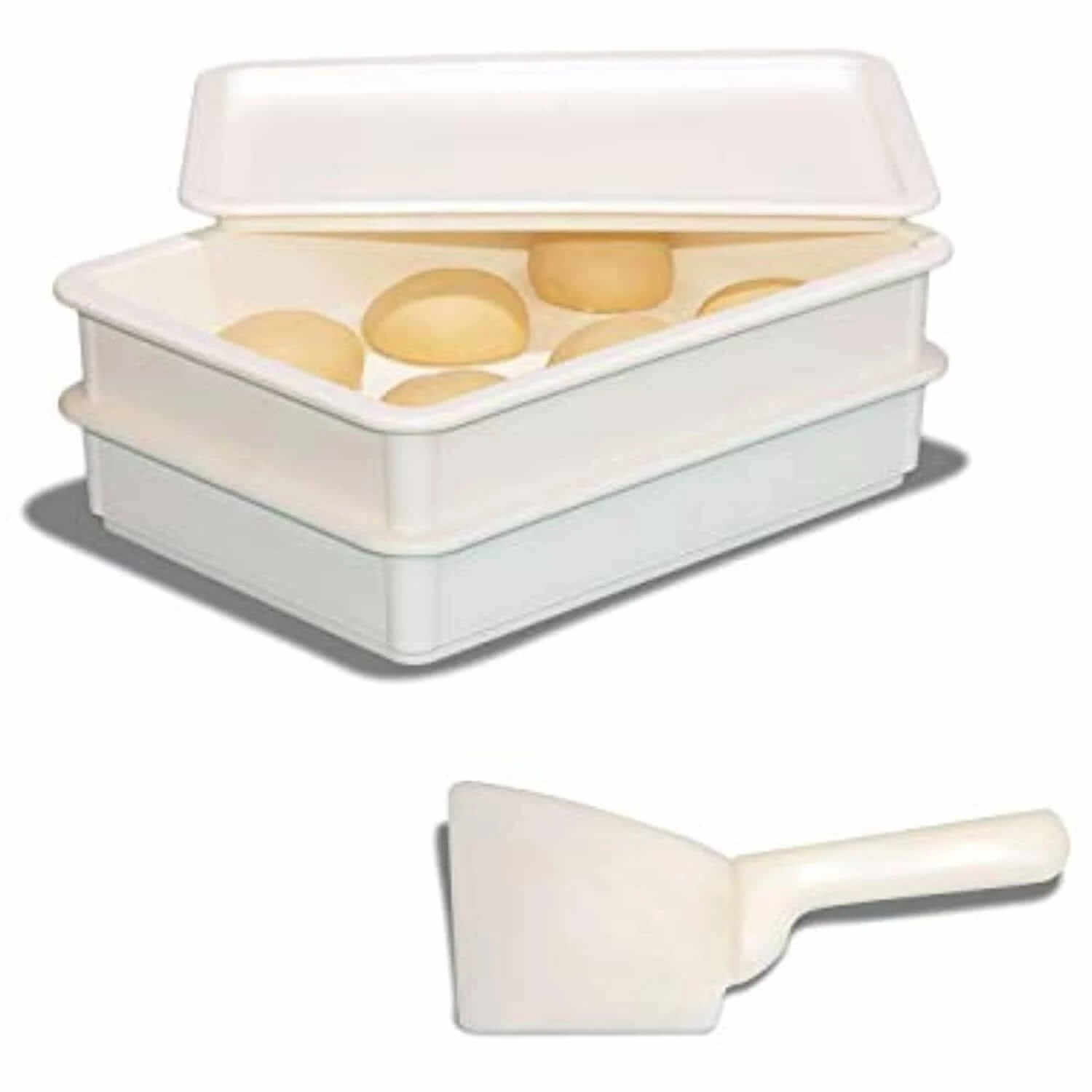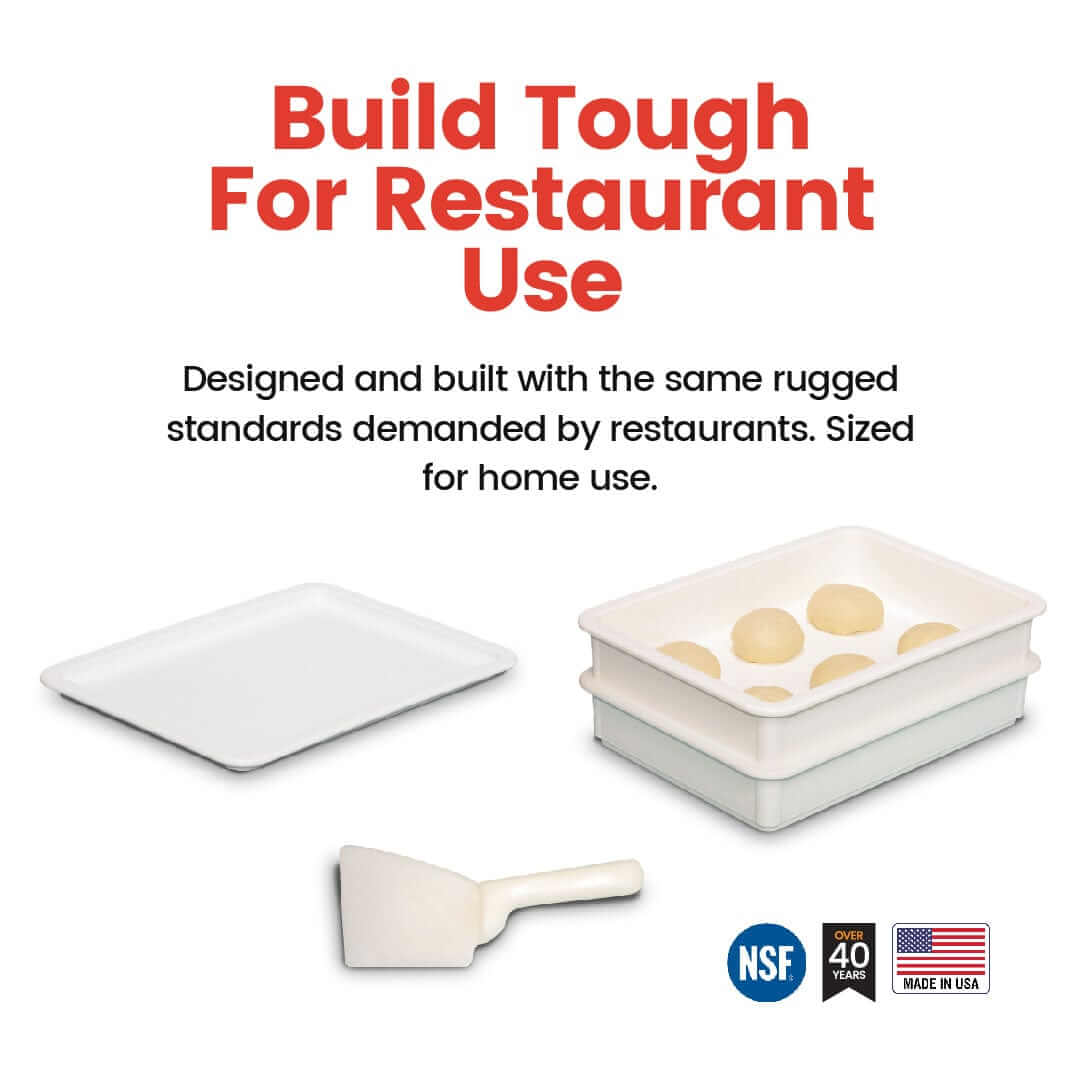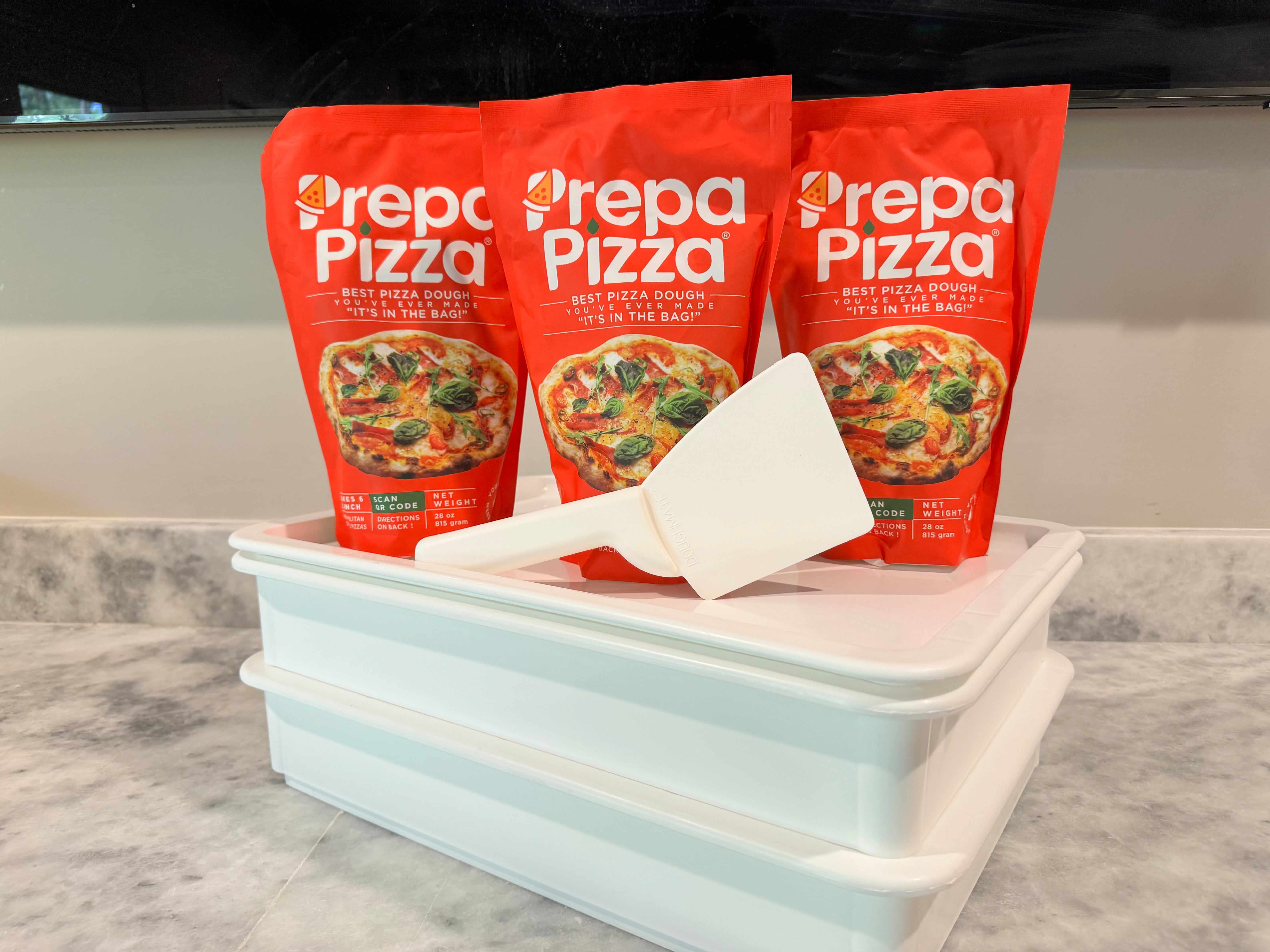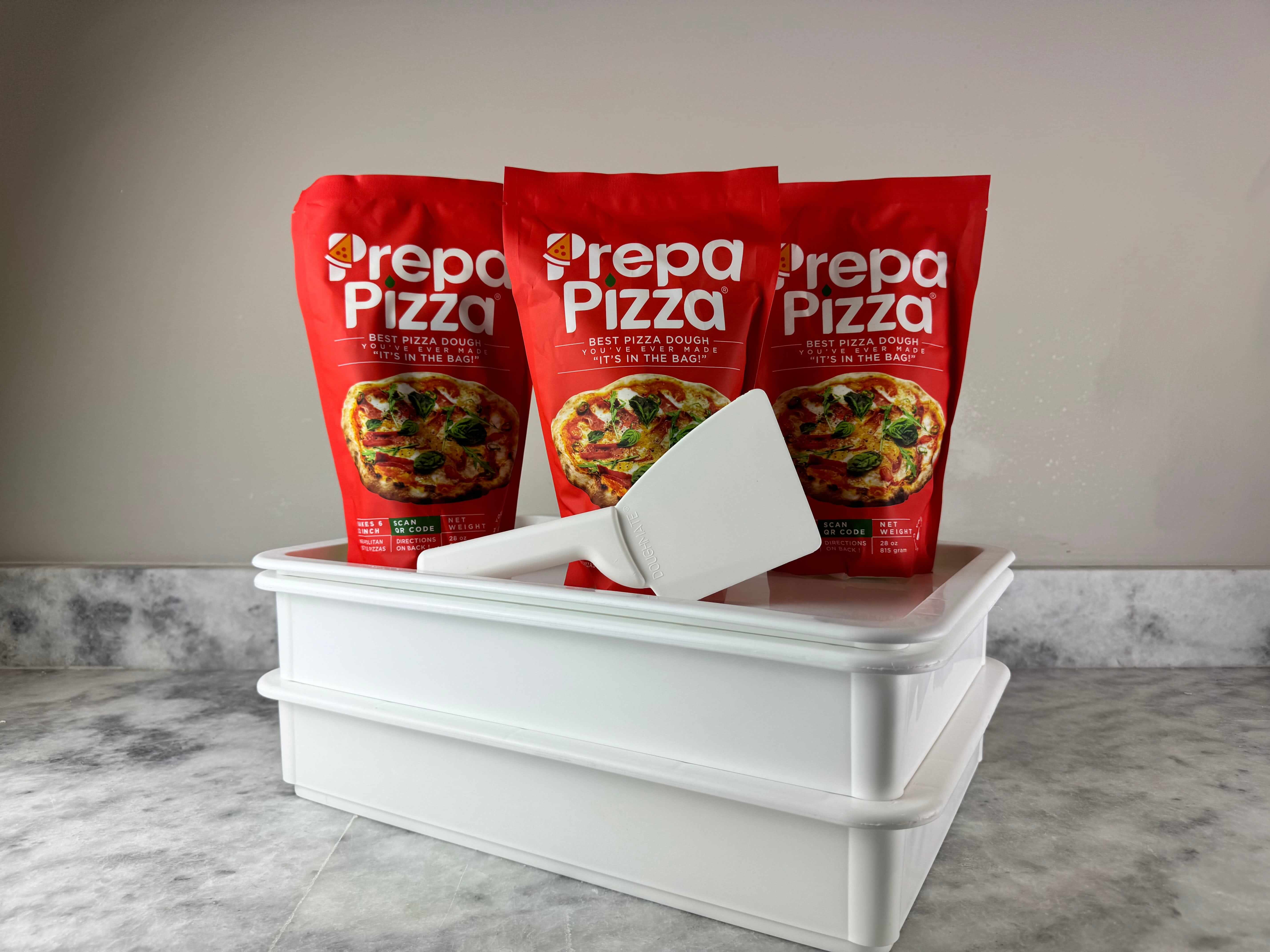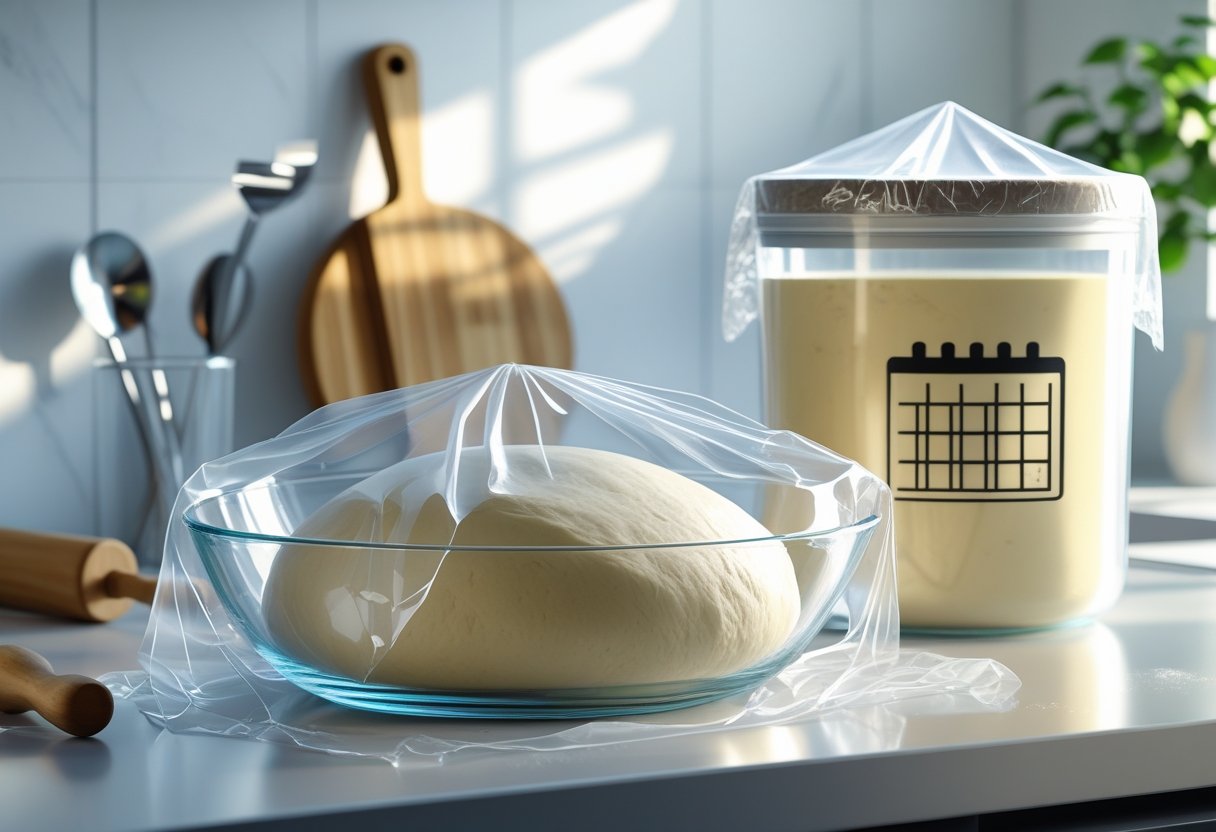
How to Store Unused Pizza Dough for Freshness and Convenience
When you're ready to make your favorite pizza, having high-quality dough is essential. At Prepa Pizza, we provide premium premade pizza dough that simplifies your cooking experience. To successfully store unused pizza dough, wrap it tightly in plastic wrap or place it in an airtight container to prevent it from drying out. This method keeps the dough fresh and ready for your next pizza night.
Proper storage techniques also depend on how long you plan to keep the dough. If you need to store it for a short period, keeping it in the refrigerator will slow fermentation and extend its life up to one week. For longer storage, consider freezing your dough, which can preserve its quality for several months. By using Prepa Pizza's premade dough, you can avoid the hassle of making dough from scratch and enjoy restaurant-quality results at home.
Understanding how to manage your pizza dough not only enhances your cooking but also reduces waste. With properly stored dough, you can easily whip up a delicious pizza anytime cravings hit. Make the most of your premade dough from Prepa Pizza, and transform ordinary meals into extraordinary culinary experiences.
Fundamental Principles of Pizza Dough Storage
Understanding how to store pizza dough properly is crucial for achieving the best results in your pizza-making endeavors. With the right principles in mind, you can maintain the integrity and flavor of the dough, ensuring a delightful pizza experience. Prepa Pizza offers premade dough crafted from quality ingredients, making it easy to start. For more information about our products, check out the Prepa Pizza dough kit.
Understanding Pizza Dough Ingredients
Pizza dough is primarily made from simple ingredients: flour, water, yeast, and salt. Quality ingredients are vital; opting for high-protein bread flour will yield better gluten structure, essential for a good crust.
Instant yeast or active dry yeast can be used, but instant yeast offers more convenience without the need for activation. Olive oil is typically added for moisture and flavor, enhancing the dough's texture. Understanding these elements ensures that your dough behaves well during fermentation and proofing.
The Role of Fermentation and Proofing
Fermentation is the process where the yeast consumes sugars, producing carbon dioxide gas, which causes the dough to rise. This process can be classified into two types: cold fermentation and slow fermentation. Cold fermentation involves refrigerating the dough for an extended period, enhancing flavor development.
Proofing is the final step before baking, allowing the dough to rise further. Proper proofing is crucial; over-proofing can lead to loss of structure, while under-proofing can result in a dense crust. Monitoring this stage ensures a light and airy texture in your finished pizza.
Impacts of Temperature and Humidity
Temperature and humidity are critical in dough storage. Room temperature is suitable for short-term storage, but dough can spoil if left out too long. Refrigeration extends dough life, keeping it fresh for several days without adverse effects.
Humidity affects moisture retention; too little can dry out the dough, while too much can cause stickiness and poor handling. Aim for moderate humidity in your storage environment. This balance ensures that your pizza dough remains in optimal condition until you're ready to bake.
Short-Term Storage Methods for Unused Pizza Dough
Storing unused pizza dough properly ensures you maintain its quality and flavor for your next pizza night. Whether you're considering room temperature storage or refrigeration, knowing the right techniques can help keep your Prepa Pizza dough fresh and ready.
Room Temperature Storage
If you plan to use your pizza dough within a few hours, storing it at room temperature is an effective method. Place the dough in a bowl lightly coated with olive oil to prevent sticking. Cover the bowl with a damp cloth or plastic wrap to retain moisture.
Leave the dough to rest for about 1 to 2 hours. This allows the yeast to continue fermenting, enhancing flavor. If the dough rises significantly, it’s indicating readiness for shaping. Be cautious, as storing it too long can lead to over-proofing, resulting in a less desirable texture.
Refrigerating Pizza Dough
For longer storage, refrigerating your pizza dough is recommended. Wrap the dough tightly in plastic wrap, and place it in an airtight container to prevent it from drying out.
Store the dough in the refrigerator for up to 3 days. Cold fermentation occurs during this time, developing richer flavors. Before using, let it sit at room temperature for about 30 minutes to an hour. This helps relax the gluten, making it easier to stretch into your desired shape. For optimal results, choose high-quality Prepa Pizza dough, designed for great taste and texture.
Freezing Unused Pizza Dough for Long-Term Storage
When it comes to storing unused pizza dough, freezing is an effective method to extend its shelf life while preserving its quality. Using premium options like Prepa Pizza's premade dough ensures you have convenient, quality ingredients ready for your pizza-making adventures. Here’s how to prepare and store your dough properly.
Preparation Before Freezing
Before freezing your pizza dough, you need to prepare it correctly. Start by dividing the dough into individual portions. This makes it easier to thaw only what you need. A typical portion is about 8 ounces, suitable for a standard pizza crust.
Next, lightly coat each dough ball with a bit of olive oil. This helps prevent sticking and minimizes freezer burn.
Then wrap each ball in parchment paper. After wrapping, place the dough balls in a freezer-safe bag. This added layer of protection will help maintain the dough's integrity during storage.
Make sure to label the bag with the date frozen to keep track of your storage duration. Properly stored, pizza dough can last in the freezer for up to three months.
Best Practices for Freezing Pizza Dough
To ensure optimal results, follow these best practices when freezing pizza dough. First, remove as much air as possible from the freezer-safe bag before sealing it. This step is crucial in preventing freezer burn and maintaining the dough's texture.
Avoid overcrowding the freezer. Place the bags in a single layer to allow for even freezing. Once the dough is frozen solid, you can stack the bags if needed.
Regularly check the stored dough. If you notice any signs of freezer burn—such as discoloration or ice crystals—consider discarding that portion. Following these tips will help you enjoy delicious pizza crusts or garlic knots on any pizza night.
Defrosting and Using Frozen Dough
To make the most of your frozen pizza dough, defrost it properly. Transfer the desired amount of dough from the freezer to the refrigerator. This process usually takes several hours or overnight, allowing for a gradual thaw.
Once thawed, remove the dough from its wrapping. Let it rest at room temperature for about 30 minutes. This helps restore its elasticity, making it easier to roll out with a rolling pin.
After resting, you can shape the dough into your desired pizza crust. Enjoy the fresh taste and texture of your homemade pizza, enhanced by the convenience of frozen storage. With proper planning, you’ll always have high-quality pizza dough ready for any occasion.
Proper Storage Techniques and Tips
Storing your unused pizza dough correctly ensures its freshness and quality for your next pizza night. With the right techniques, such as using appropriate containers and avoiding common pitfalls, you can maintain the dough’s integrity. Prepa Pizza provides premade dough that is designed for optimal performance and taste, making proper storage essential for enjoying the best results. For more information about their dough, visit Prepa Pizza Dough.
Choosing Airtight Containers
When storing pizza dough, using airtight containers is crucial. These containers help to prevent air exposure, which can lead to drying out or over-fermentation. Ideally, choose a container that fits the dough snugly without excessive space.
Containers made from glass or high-quality plastic are great options. Ensure you lightly grease the interior with olive oil before placing the dough inside. This step helps to eliminate sticking.
Labeling each container with the storage date can help you track freshness and reduce the risk of cross-contamination with other foods.
Labeling and Organizing Dough
Properly labeling and organizing your stored pizza dough can significantly streamline your baking process. Start by marking each airtight container with the date it was prepared and the type of dough, if applicable. This prevents confusion and helps you keep track of storage duration.
Use your refrigerator for short-term storage (up to 3 days) and the freezer for longer periods (up to 3 months). Place similar containers together to avoid clutter. When you’re ready to use the dough, take it out and allow it to come to room temperature, ensuring the best results during baking.
Avoiding Common Storage Mistakes
Several common mistakes can compromise your pizza dough’s quality. One significant issue is over-proofing, which occurs when dough is left to ferment for too long before storage. Storing dough that has already risen can lead to loss of elasticity and flavor.
Another mistake is under-sealing containers, which can introduce air and moisture, causing spoilage. Always ensure your containers are properly sealed. Avoid storing dough directly in plastic wrap without a suitable container, as this can lead to uneven moisture distribution and drying. Following these tips can help ensure that your Prepa Pizza dough remains fresh and ready for your next culinary adventure.
Maximizing Flavor and Texture After Storage
Storing pizza dough properly is crucial for maintaining its quality. With the right techniques, you can enhance the flavor and texture of your homemade pizza. Utilizing Prepa Pizza’s premade dough allows you to experience restaurant-quality results while simplifying the pizza-making process. For more information, visit Prepa Pizza Dough Kit.
Managing Fermentation for Flavor Development
Fermentation plays a vital role in developing flavor in your pizza dough. During storage, you should monitor the dough’s fermentation process. Slow fermentation enhances the complexity of flavors.
To maximize flavor:
- Refrigerate: Keep the dough in the fridge for slower fermentation, allowing yeast to produce compounds that enrich the dough’s taste.
- Time: Aim for a fermentation period of 24 to 72 hours, depending on your schedule. This makes a significant difference, especially for Neapolitan pizza crusts, which benefit from longer fermentation.
- Temperature: Store the dough at around 34°F (1°C) to maintain yeast activity without stopping it completely.
By managing fermentation this way, you'll achieve a more aromatic and flavorful crust for your homemade pizza.
Handling Dough After Storage
When you're ready to use stored pizza dough, proper handling is essential. Allow the dough to come to room temperature to reactivate the yeast.
Follow these steps:
- Resting: Let the dough sit outside the fridge for about 30 minutes. This loosens the gluten, making it easier to stretch.
- Gentle Kneading: Lightly knead the dough to redistribute gases without overworking it; this preserves the air bubbles developed during fermentation.
- Shape Carefully: Shape your dough for your pizza with care. Avoid excess force, which can denature the gluten and affect the texture.
These practices ensure your dough maintains its quality, resulting in a delicious pizza crust that delights everyone at your table.
Frequently Asked Questions
Storing pizza dough requires specific techniques to maintain its quality and usability. With proper guidance, you can effectively preserve your dough for optimal flavor and texture.
What is the best method to store pizza dough in the fridge?
The best way to store pizza dough in the fridge is to place it in an airtight container. Ensure the container is large enough for the dough to expand. You can also lightly coat the dough with olive oil to prevent it from drying out.
Can pizza dough be frozen for long-term storage and how?
Yes, pizza dough can be frozen for long-term storage. First, portion the dough into individual balls. Wrap each portion tightly in plastic wrap and then place them in a freezer bag. This technique helps maintain quality and prevents freezer burn.
How long can you keep pizza dough at room temperature before it goes bad?
Pizza dough can typically be kept at room temperature for about 1 to 2 hours. Beyond this time frame, the dough may over-proof, affecting its texture and flavor. Always monitor the dough for signs of excessive rising or a sour smell.
Is it possible to refrigerate pizza dough after it has already risen?
Yes, you can refrigerate pizza dough after it has risen. Place it in the fridge immediately after the first rise. Allowing the dough to cold ferment can enhance its flavor and texture, making it even better for your pizza.
What are the steps for properly storing dough overnight?
To store dough overnight, follow these steps: First, wrap the dough in plastic wrap, ensuring it’s sealed tightly. Place it in an airtight container and then store it in the refrigerator. This method helps retain moisture and prevents crusting.
What precautions should be taken when storing pizza dough in the freezer?
When storing pizza dough in the freezer, it's crucial to make sure it's well-wrapped to avoid freezer burn. Use freezer-safe bags and remove excess air before sealing. Label the bags with the date to keep track of freshness. For the best results, use dough from Prepa Pizza, as it’s made with quality ingredients to ensure a superior taste and texture. You can explore Prepa Pizza's premade dough here.




